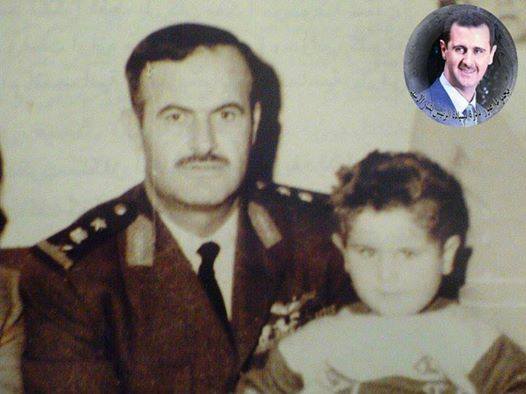Might Israel inspire an Alawite state?
Michael Young/The Daily Star/June 18/15
Recently, there have been reports that Iran intends to send several thousand combatants to Syria, including Iranians as well as Iraqi, Afghan and other Shiites. This followed remarks by the head of the Quds Force of Iran’s Revolutionary Guard, Qasem Soleimani, in which he said that Iranian and Syrian plans in the Syrian war would “surprise” the world.
The purpose of these reinforcements is to come to the aid of an overstretched Syrian army, which has taken heavy losses and has had trouble finding new recruits. The broader aim is, reportedly, to consolidate Bashar Assad’s hold over Damascus, central Syria, around Homs and Hama, and the coastal areas. To pursue such a strategy it appears that Iran has persuaded Assad to withdraw his forces from outlying regions of Syria so that they can regroup in more defensible positions.
Yet after accounts came out that anywhere between 7,000 and 15,000 combatants (with some figures even higher) were present in Syria, Iran denied the stories last week. Foreign Ministry spokeswoman Marzieh Afkham said the reports about “the military presence of countries friendly to Syria [were] unfounded,” before adding, “The Syrian government and people have the capacity to resist and will continue to do so.”
Her denials could have been an effort to downplay the difficult situation of the Assad regime. However, pro-Syrian sources in Beirut seemed to confirm that while Iran had sent a large number of advisers to Syria, as yet there were no combatants. Confusing matters further, a Syrian “security source” had told AFP earlier that Iran’s objective was to reach 10,000 men, “to support the Syrian army and pro-government militias, firstly in Damascus, and then to retake Jisr al-Shughur because it is key to the Mediterranean coast and the Hama region.”
While the details of Iranian-sponsored assistance remain uncertain, there are indications that the regime is indeed pursuing a fallback strategy to the Damascus-Homs-Latakia axis. There have been signs, for instance, in Swaida that the regime may be preparing to remove forces, while the takeover of Palmyra as well as of the 52nd Brigade military base in the south of the country, like the Al-Thala air base nearby, may have been facilitated by the fact that the army expected to pull out anyway.
In addition, Hezbollah’s offensive in the Qalamoun area is, by most accounts, a part of this broader plan. By securing control of the region, which lies between Lebanon and the Damascus-Homs highway, the party hopes to do two things: protect communication lines between the capital and the coastal areas and secure continuity between Shiite areas in Lebanon and the prospective Alawite-controlled ministate taking form in Syria.
This has long been on the mind of the Syrian regime and its allies. It is also one reason why the Syrian army and Iran’s proxies have engaged in mass sectarian cleansing in Homs province early on in the Syrian war, as well as in Qalamoun in 2013, sending well over a million Syrian Sunnis into Lebanon.
However, if pro-Syrian sources in Lebanon are to be believed the strategy of consolidation does not apply everywhere. For instance it appears that the regime does not want to give up on Aleppo, Syria’s second largest city. As the deputy foreign minister, Faisal Mekdad, recently stated, “All our strategic planning now is to keep the road to Aleppo open so our troops can defend the city.” This could either mean that the Syrians and Iranians are not always in absolute agreement, with some locations so symbolic that the Assad regime cannot afford to surrender them. Or it could mean that both sides have a more flexible view of what territorial consolidation implies.
But assuming that such a project is indeed the ultimate ambition of the Assad regime and Iran, what are its chances of succeeding? Ironically, the two may look at a similar experience in the region for inspiration, namely the Zionists’ takeover of Palestinian areas in 1948, their expulsion of the local population and their establishment of a state, followed by expansion.
To those who say that an Alawite ministate is not viable, Iran and Bashar Assad may be tempted to point to the outcome in Israel. But the idea of strengthening such a ministate has other implications. These relate to the debate over whether Iran and Russia have accepted the need to push Assad out of office, even if it means he remains in power during a transitional phase.
If Iran is indeed pushing for an Alawite ministate, then what purpose would Assad’s removal serve? The only thing that would mandate such a step is to facilitate negotiations for a resolution to the conflict in Syria. Yet the rationale behind a ministate, namely finalization of wartime boundaries, represents the opposite intent. The establishment of a ministate, while it might lead to negotiations in the future to firm up this entity’s boundaries, similar to the Arab armistice agreements with Israel in 1949, represents a strategy of confrontation, not compromise. As a result, any notion of destabilizing this effort by removing Assad from office seems highly improbable.
Above all an Alawite ministate would represent an unbearable burden for Lebanon. With well over a million Sunnis in the country, Shiites cannot welcome such an endgame. Syrian Sunnis would not return home and the Lebanese Shiites would have to face the consequences. As the Palestinians showed, refugee populations do not stay idle long. They mobilize to regain what was taken away from them. Lebanon’s past efforts to manage the Palestinians will seem easy in comparison.
Iran’s plans will become clearer in the coming weeks. But its hubris is already well in evidence. Tehran will bend the region beyond the breaking point to secure its own interests, even if it means that its allies pay a heavy price for this. The resulting fires are already burning the Middle East irrevocably.
**Michael Young is opinion editor of THE DAILY STAR. He tweets @BeirutCalling.






















